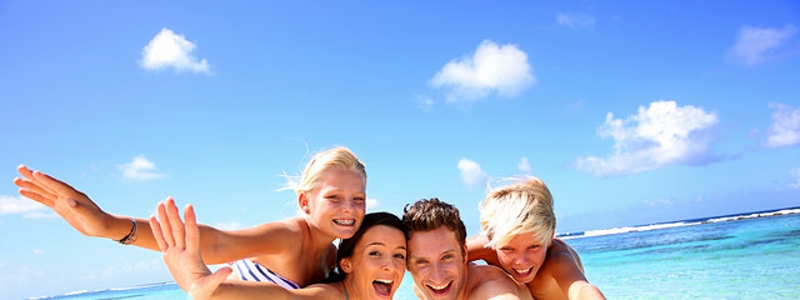The summer holidays are in full swing, which hopefully means lots of fun
fuelled day trips to the beach with the kids. Here at Tutor Doctor we
know how important beach safety is for the whole family. From sunscreen
to water safety we’ve covered the 7 most important things to keep
your children safe on the beach this summer.
1.Swim safe
Water safety is by far the most important thing to consider when visiting
the beach. Here’s what you’ll need to be thinking about when
the kids are going into the sea:
Rip Currents
Rip currents are one of the most dangerous things about the sea and can
pull out even the strongest swimmers. It’s crucial to recognise
the signs of the water so you can be prepared and keep the whole family
safe. Here’s what The National Oceanic and Atmospheric Administration
(NOAA) recommend looking out for.
- A channel of churning choppy water
- Difference in the colour of water
- Lines of foam, seaweed or debris moving seaward
- A break in the incoming wave pattern
Inflatables
Inflatables may seem like a great idea but perhaps are best saved for
the swimming pool rather than the beach. They can easily float out to
sea, even if there is only a slight wind. We know that the kids might
not like this idea but safety should always come before fun.
Jellyfish
In the UK jellyfish often lurk in the shallow waters, so it’s important
to look out for their clear jelly-like bodies. Symptoms of a sting include
blisters, pain, tingling and itching. If you think your child has been
stung remember to not rub the injured area, as it will only make the pain
worse. Always contact a lifeguard or a doctor for further treatment.
Supervision
It’s important that your kids are always supervised on the beach,
especially when going near the water. Even though you think you have prepared
them by having swimming lessons the sea can be unpredictable- so don’t
let them swim alone. Waves can also be deceiving and sweep kids under
in less than a second- so make sure someone always has their eyes on them.
2. Choose a beach with a lifeguard
It’s always best to choose a beach that has lifeguards present.
Not only are they fully trained to watch out for hazards but will look
out for your children’s safety.
3. Know your Beach flags
Beach flags are one of the most important things to look out for when
spending the day at the beach, especially if there isn’t a lifeguard
present. Not only should you be able to recognise them but your kids should do too.
Red Flag = No Swimming at all
Between Two Red and Yellow Flags = Safe to swim
Between Two Black and White Flags = No swimming- surfers/windsurfers only
Orange Windsock = Dangerous Wind Conditions
4. Keep Hydrated
Whilst having a fun day at the beach it’s super easy to forget to
have enough to drink. Often children are so busy playing in the sand or
swimming they won’t always let you know they are thirsty. So make
sure you keep lots of water to hand and offer it to them often.This will
prevent dehydration, which can be dangerous if left untreated.
5.Apply and re-apply sunscreen
Being sun smart is vital- especially as children have delicate skin that
burns more easily than adults. Try using SPF 30+ and make sure your kids
are wearing a hat and a rash t-shirt for extra protection. Apply every
two hours and re-apply after the kids get out the water.
6.Make the most of the shade
On a really hot day it’s important to not be exposed to the sun
for too long, especially when it’s at its hottest which is usually
around 12-3pm. Try to make the most of the shade- even if the kids don’t
want to. Perhaps have a long lunch or encourage some beach reading.
7. Make sure the kids wear appropriate footwear
Try and encourage the kids to wear flip-flops or sandals on the sand.
Not only can it get extremely hot, but there are assorts of hidden nasties
such as glass, sharp rocks and shells. You could even invest in some water
shoes if your child is always in and out of the sea.
Even though it’s vital parents know about beach safety, it’s
just as important that your children know about it too. Make sure you
tell them about these safety points- you could even make it fun and get
them to make their own poster.

